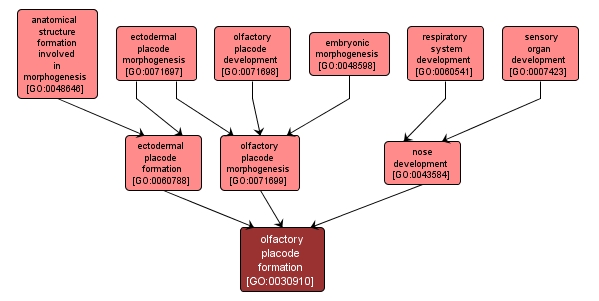GO TERM SUMMARY
|
| Name: |
olfactory placode formation |
| Acc: |
GO:0030910 |
| Aspect: |
Biological Process |
| Desc: |
The formation of a thickening of the neural ectoderm in the head region of the vertebrate embryo which develops into the olfactory region of the nasal cavity. |
|

|
INTERACTIVE GO GRAPH
|














